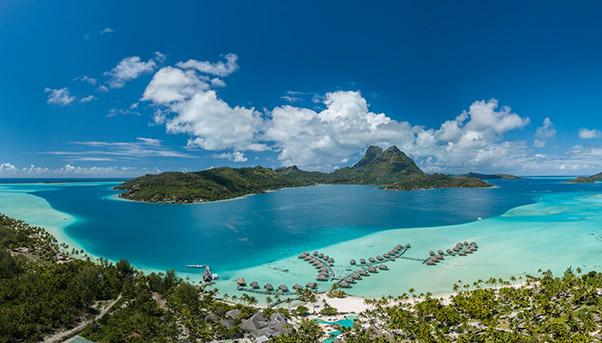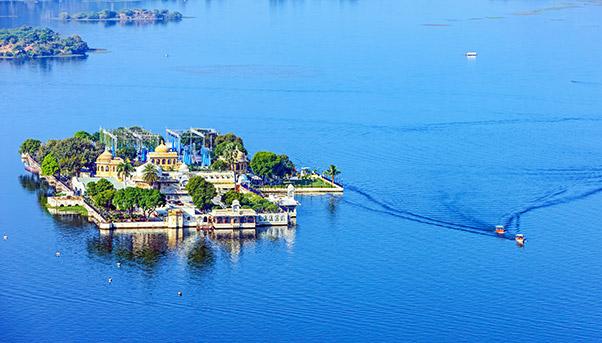
Will the cities of the future be floating atop the sea? Several projects and experiments around the globe are pointing in that direction. The new frontier of urbanization is increasingly linked to the idea of colonizing the sea through floating cities. From French Polynesia to Monte Carlo, mega-plans to for humans to inhabit the seas are multiplying, driven by population growth and concerns about sustainability.
A floating city in Tahiti: the Singapore project
The pioneers of this new future live in Singapore: this is where a start-up called Blue Frontiers is based that has signed an agreement with the government of French Polynesia to build the world’s first floating city, just south of the country’s capital of Tahiti.
The modular city
will be built on a secure area where the water is no more than 30 meters deep,
and less than a kilometer from the coast. It will be composed of 11 square or
pentagonal platforms, each one 700 square meters large, that are built with
reinforced concrete and connected to one another through a series of bridges.
The budget is set at $60
million to build this floating mini city, which will be equipped
with homes, a hotel, restaurants and offices. To
raise the necessary funding, Blue Frontiers aims to finance the project in bitcoin.
The idea of building cities on man-made islands is not new. Already during
the 1960s the
U.S. philosopher-architect Buckminster Fuller proposed a plan for Japan to
build a floating city called Triton
City, with the idea of solving Tokyo’s overpopulation problem.
That project never made it off the drawing board, but now nearly sixty years later Tahiti will have its chance, with work slated to start by 2020. Blue Frontiers is not taking on this project on its own.
It is supported by a large U.S. institution, the Seasteading Institute of San Francisco, a non-profit organization managed by Joe Quirk founded in 2008, dedicated to looking for technological solutions for builders of floating cities. The idea for the Tahiti project is to create a self-sufficient community far from the coast with a strong sustainability imprint: the “huts,” which will not exceed 3 meters in height to avoid a visual impact on the environment, will be powered by solar panels and the water will be desalinated and recycled. «I want to see floating cities by 2050, thousands of them hopefully, each of them offering different ways of governance», Quirk said. «The more people moving among them, the more choices we’ll have and the more likely it is we can have peace, prosperity and innovation».

Despite his resemblance to a nineteenth-century utopian Socialist, Quirk has the backing of Silicon Valley, and the founder and principal sponsor of the Seasteading Institute is Peter Thiel, the billionaire founder of PayPal.
Monte Carlo and the new floating city of Renzo Piano
But Quirk’s dream of a modern Atlantis re-emerging from the waters is not the only one. Actually, plans for floating cities are multiplying around the world. San Francisco tried one in 2010, without success. Monte Carlo, on the other hand, has already started construction work on Portier Cove, and will soon unveil a six-hectare eco-development of artificial islands.
The tiny Principality of Monaco is hungry for more space. It has built on every available corner of land, reaching a population density of 38,400 residents in two square kilometers and making it the world’s second-most crowded country. The only possibility to grow is to build on the sea. In front of the Larvotto beach, Italian architect Renzo Piano is designing a massive floating city that will cost between 2-3 billion euros. The sum will be covered mainly by private investors, while Prince Ranieri’s administration will take a minority stake. Work has already begun, and the first gigantic pillar – 27 meters high and weighing 10 tons – has already been put in place. The project calls for more maxi-pillars to support the floating city, plus 600,000 tons of sand that will arrive from Sicily to fill a 30-meter-deep embankment. The inhabitable part of the artificial island will have 60,000 square meters of residential real estate, a skyscraper, 3,000 square meters of shops, a yachting port and a “branch” of the Grimaldi Forum, the Principality’s conference center.
These super-exclusive residences of the future will not be affordable for everyone: according to estimates based on current real estate values in Monte Carlo, prices will range from 80,000 to 100,000 euros per square meter. The builders could reap 5 billion euros from the sale, or double the forecasted construction costs.
Floating cities and water urbanization
The theme of floating cities is sparking interest all across Europe. In the Netherlands, the marine research institute MARIN has been awarded a grant by the European Union to research possible solutions. The institute is a leader of the “Space at Sea” project, which won 1.6 million in EU funding to come up with projects for floating cities over the next three years wherever it is possible to duplicate a lifestyle on land – from vertical farms to ports and parks. With this goal in mind, MARIN is adopting an urban model that can fit all of the EU countries that border the sea. It is a first step towards the urbanization of water, and a bet that could bring the dream of floating cities within the reach of everyone.

